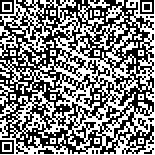| This article has been:Browse 548Times Download 625Times |

scan it! |
|
|
| DOI:10.13522/j.cnki.ggps.2022349 |
|
| Diagnosing Nitrogen Content in Maize Canopy in Hetao Irrigation District Using Multi-source Remote Sensing Data |
|
LIN Rencai, CHEN He, ZHANG Baozhong, WEI Zheng1, LI Yinong1, SANG Honghui
|
|
1. State Key Laboratory of Simulation and Regulation of Water Cycle in River Basin, China Institute of Water Resources and Hydropower Research, Beijing 100038, China; 2. Nanchang Institute of Technology, Nanchang 330029, China
|
| Abstract: |
| 【Objective】Precision agriculture needs a rapid diagnosis of water and nutrient deficits, which is challenging at large scales in the field. Taking maize as an example, this paper proposes to estimate nitrogen content in maize canopy using remote sensing data.【Method】The study was carried out at Hetao Irrigation District using UAV multi-spectral imagery data measured in 2020. A variety of vegetation indices extracted from the imageries were used to calculate nitrogen content in the canopy when the crop grew to different stages. The model was validated against ground-truth data and was then used to evaluate critical nitrogen concentration and potential nitrogen pollution at different growth stages.【Result】The planted area of maize in Hetao Irrigated District in 2020 was 275 000 hm2. The suitable vegetation indices for calculating canopy nitrogen varied with growing stages; the canopy nitrogen at elongation, early and late tasseling stage and flowering stage was best estimated by GBNDVI, RVI, NRI, and NDVI, respectively. It was found that nitrogen concentration in the canopy was low at the flowering stage, and high at the elongation and later tasseling stage, during which nitrogen pollution could occur. Analysis showed that the risk of nitrogen pollution was Grade 4 in early tasseling stage and zero in flowering stage.【Conclusion】The UAV multispectral image data can be used to estimate nitrogen content in plant and assess the potential of nitrogen pollution at different growing stages at large scales in the field. It can help improve fertilization and reduce the potential of non-point source pollution. |
| Key words: nitrogen concentration; maize; remote sensing; pollution risk; the Hetao Irrigation District |
|
|